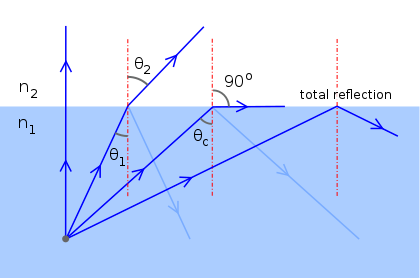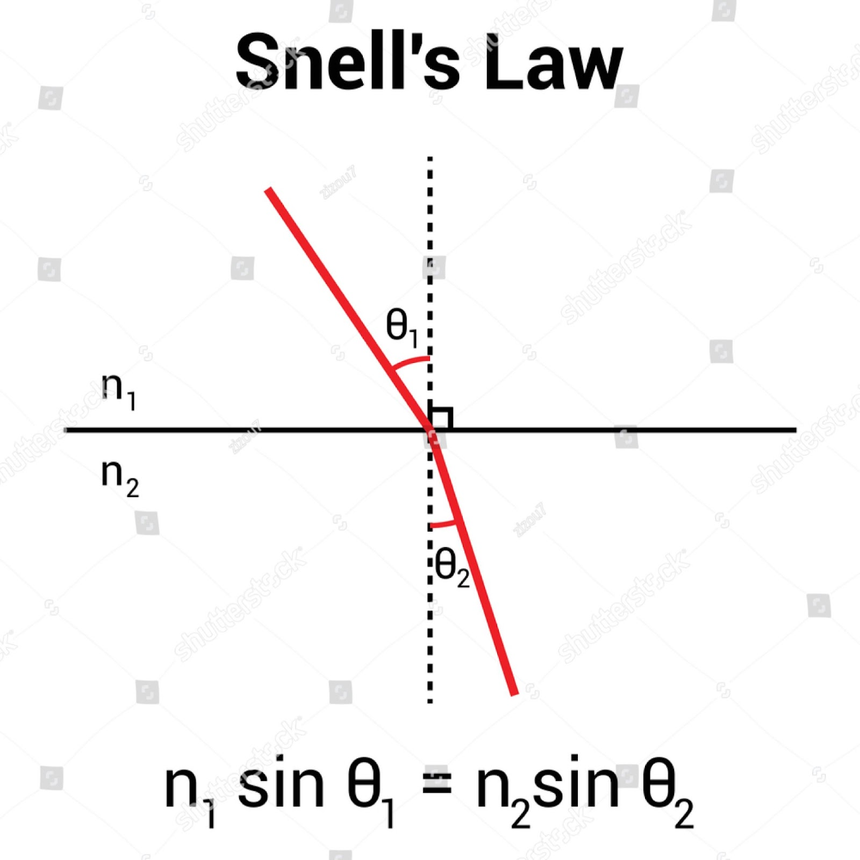TIR Full Form
TIR stands for Total Indicator Runout. It is a word used frequently in manufacturing, particularly when working with rotating parts. Other names for TIR are total indicator reading including total indicator movement and, more recently, Full indicator movement (FIM). The difference between the highest and minimum values measured throughout a whole rotating surface about a reference axis is the difference in TIR.
This Story also Contains
- Runouts In TIR
- Significance
- Other Full Forms Of TIR
- Total Internal Reflection
- Necessary conditions for TIR
- Critical Angle
- Traumatic Incident Reduction
TIR defines a border zone on a blueprint where all points on the given surface must fall in order for the part to fulfil specifications.
Runouts In TIR
Runout is conceptually similar to TIR, but it only applies to a specific region or spot, rather than the entire spinning surface. Each location's minimum and maximum values are evaluated independently of all other locations. A single arrow and a value referenced against a datum axis are used as the symbol.
Significance
TIR or runout specification sets the boundary within which the parts will work properly for their intended application and life cycle.
TIR evaluates roundness in reference to a centre line.
TIR also allows shippers to choose multimodal transportation, allowing items to be transported via the most efficient route.
Other Full Forms Of TIR
Total Internal Reflection
TIR stands for Total Internal Reflection.
When a light ray passes from an optically denser medium to a rarer medium and is incident at an angle greater than the critical angle of the medium, the ray totally reflects back into the medium. This is known as total internal reflection.
Necessary conditions for TIR
TIR occurs only when both of the following conditions are met:
Light travels from a more dense medium into a less dense medium (e.g., glass to air).
The angle of incidence is greater than the critical angle.

Critical Angle
The critical angle is the incident angle for which the angle of refraction is 90 degrees. If the incident angle exceeds the critical angle then total internal reflection takes place at that surface. As the angle of incidence increases, so does the angle of refraction according to the snells law. Thus, the angle of incidence that yields a 90-degree angle of refraction is the critical angle. Snell's law can be used to determine the critical angle by setting the refraction angle to 90°.

Snell's law states that "the ratio of the sine of the angle of incidence to the sine of the angle of refraction is a constant, for the light of a given colour and for the given pair of media."
The formula for critical angle is \frac{n_{1}}{n_{2}}=\frac{sin\theta _{1}}{sin\theta _{2}}
![]()
Thus If the indices of refraction of the two materials on either side of the boundary are known, this equation for the critical angle can be used to estimate the critical angle for any boundary.
Traumatic Incident Reduction
Traumatic Incident Reduction (TIR) is a technique that involves revisiting traumatic incidents on a regular basis. The ultimate goal is to separate the trauma from the incident itself. Using the TIR approach, segments of events can be unblocked or one's relationship to an event can be changed. Certain guidelines make the process more effective.
Trauma Incident Reduction (TIR) is a quick, one-on-one, non-hypnotic, person-centred, basic and structured strategy for permanently removing the negative consequences of past traumas.
Trauma is formed of repressed material, which may include one or more goals. At the very least, there is a desire to push it away, obliterate it, and repress it. There are usually additional intentions as well, such as the intention to fight back, exact revenge, flee, or (very frequently) ensure that nothing like this happens again.
Frequently Asked Questions (FAQs)
The 4 R's framework is a helpful way to comprehend the trauma and It uses a trauma-informed approach.
The "Four R's" lead the trauma-informed approach: Recognizing the indicators of trauma, having a system that can respond to trauma, and fighting re-traumatization.
Its primary focus areas are to -
Realization- Realize the trauma's broader effects
Recognize- Consider the effects on the pupil.
Respond -Respond in a way that encourages healing from trauma and makes kids feel heard.
Resist Re-traumatization-Avoid becoming re-traumatized.
Concentricity is defined as the relationship between two or more circles or circular surfaces that share a shared centre. TIR (total indicator reading) refers to the complete movement of the hand of an indicator set to record the amount by which a surface deviates from being concentric.
There is no loss of intensity in TIR since 100% of incident light is reflected back into the same medium, whereas there is always some loss of intensity in reflection from mirrors and refraction from lenses. As a result, total internal reflection images are substantially brighter than mirror or lens images.
In Total Internal Reflection, for isotropic media, total internal reflection cannot occur if the second medium has a greater refractive index (lower normal velocity) than the first.
TIR is a faster therapeutic procedure than more typical psychotherapy. This therapy entails a client reliving a traumatic event in a safe, judgement-free atmosphere, free of interruptions or subjective interpretations.